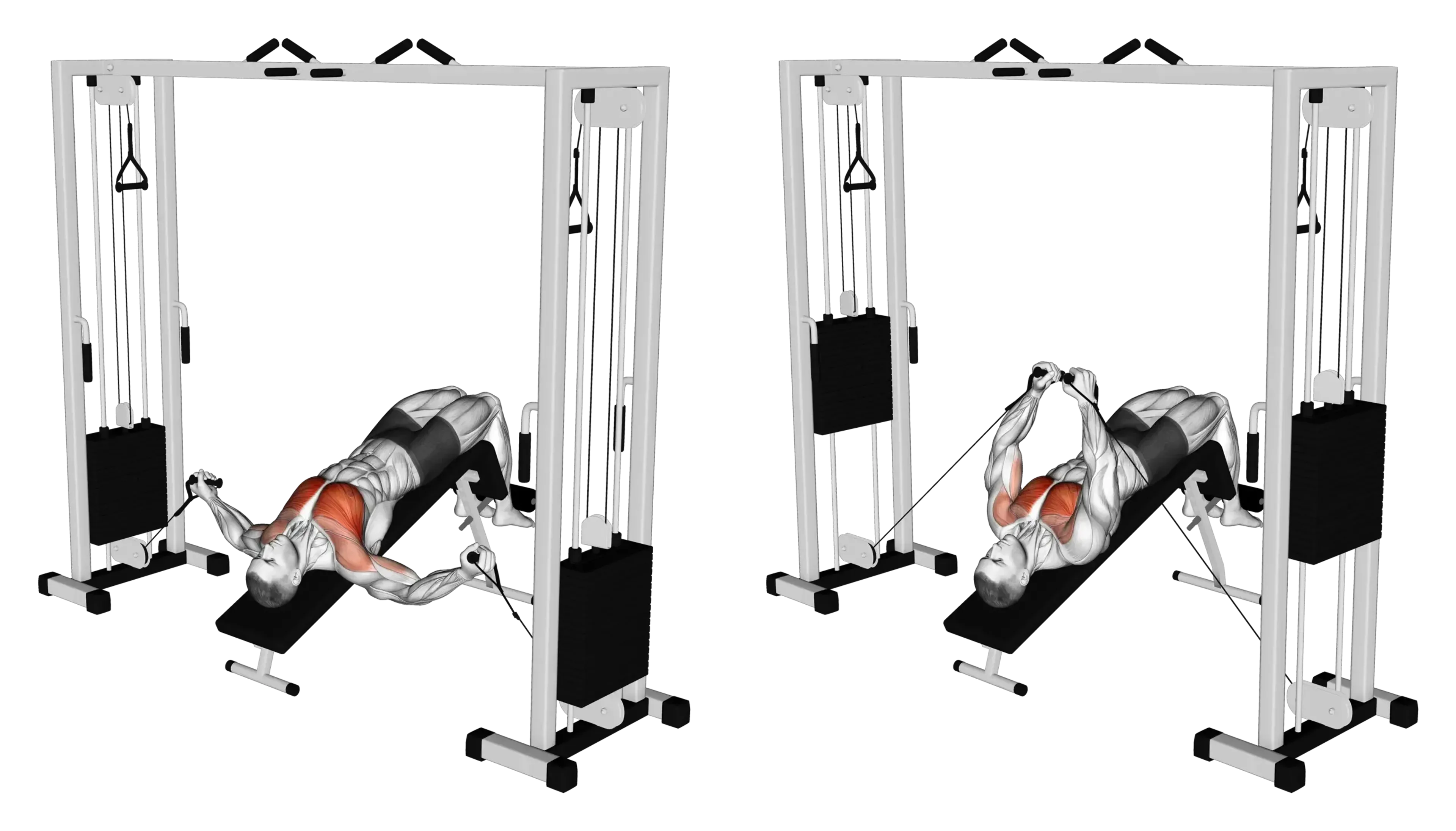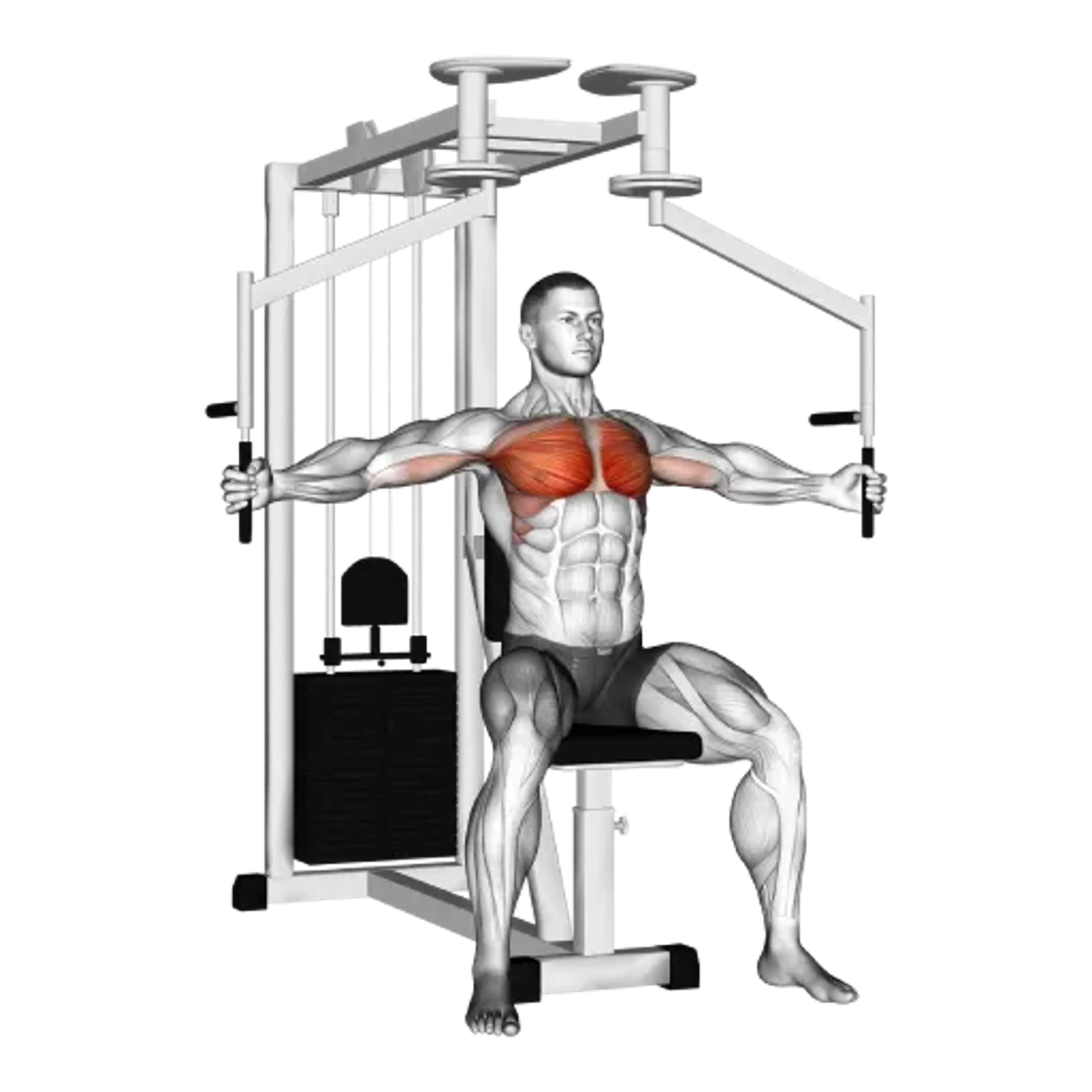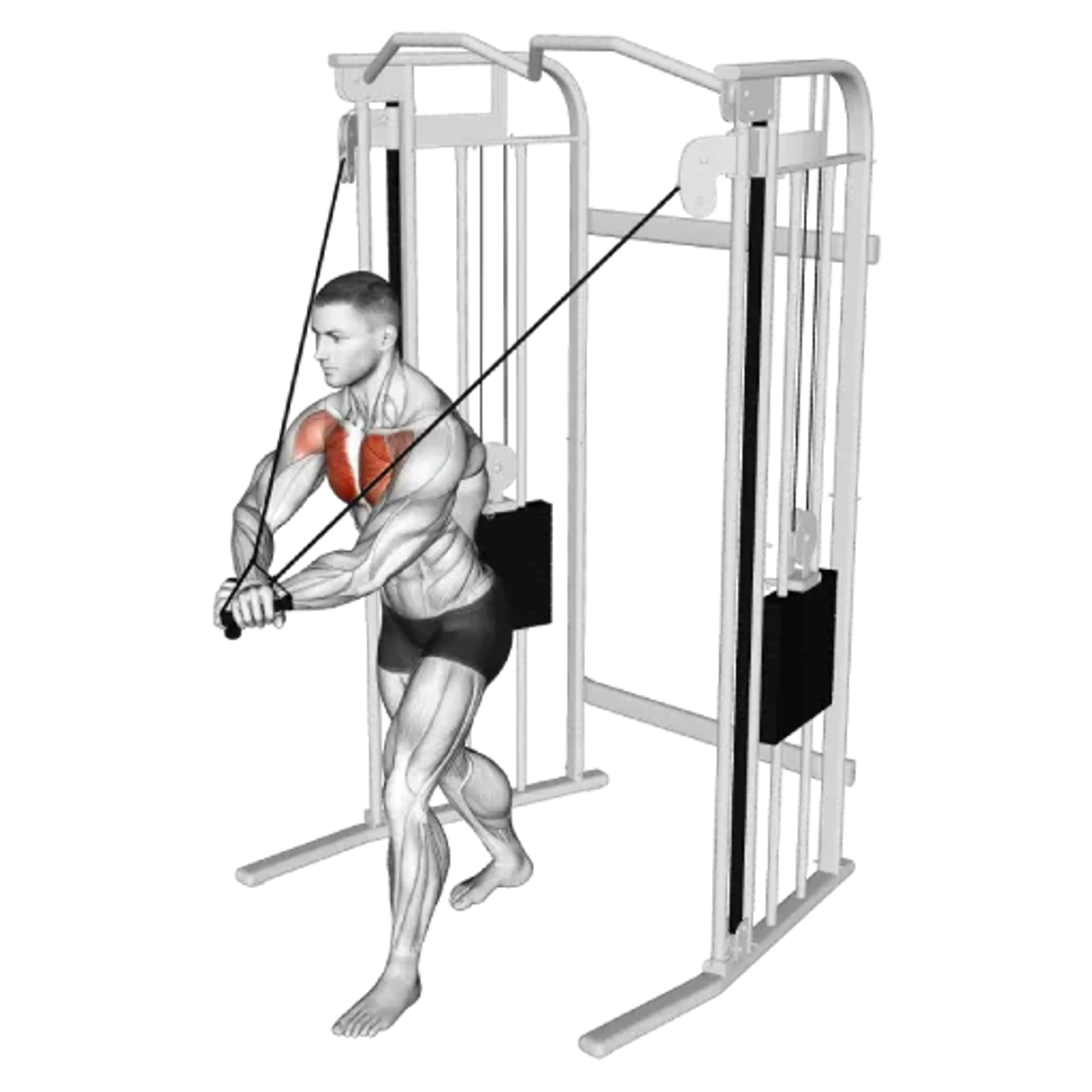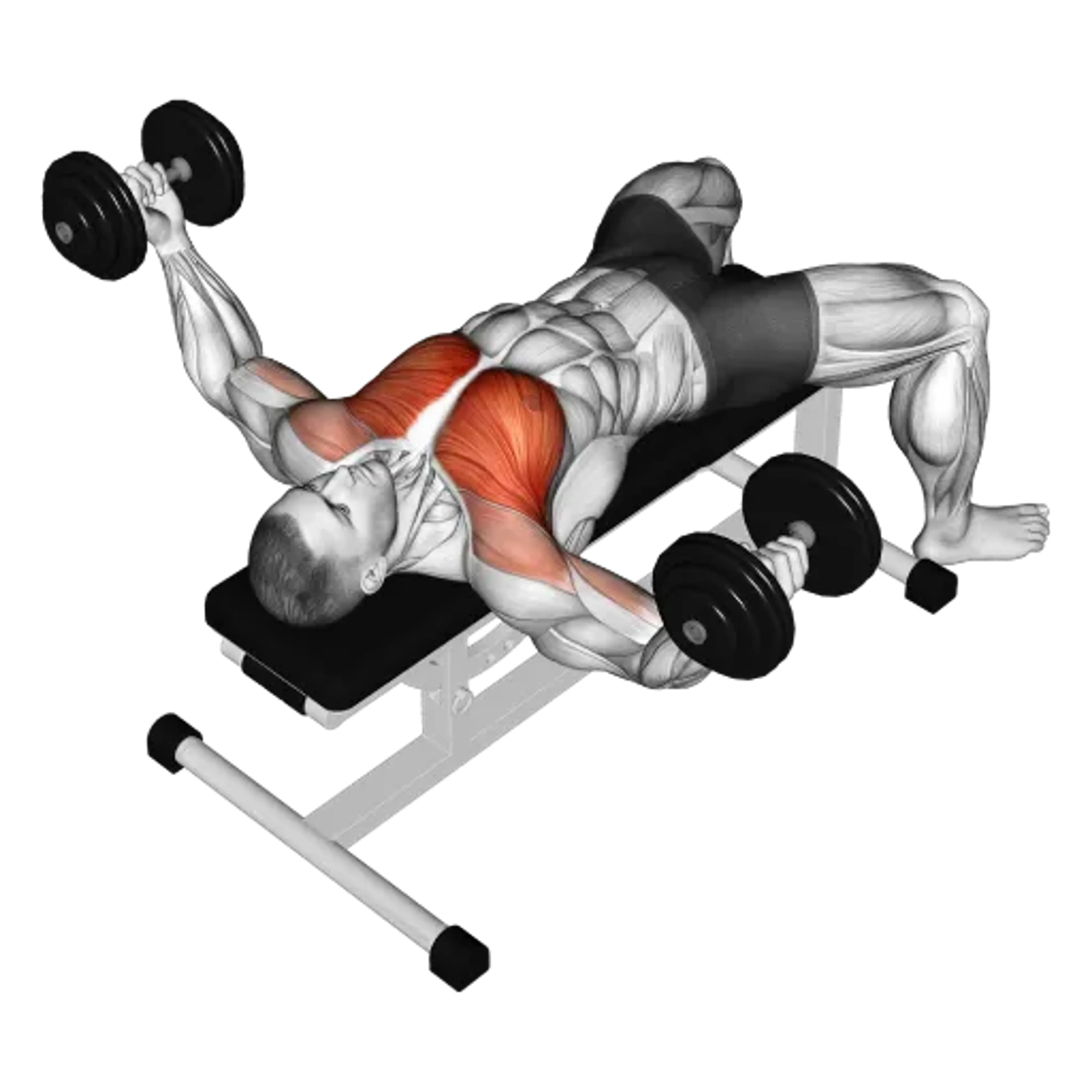Cable Decline Fly

Overview
- Primary Focus:
- Chest.
- Equipment:
- Cable and bench.
- Difficulty:
- Intermediate.
General Information
Cable Decline Fly is an isolation exercise that primarily targets the chest and also engages the front shoulders. It is an intermediate-level movement that emphasizes the lower fibers of the pectorals using a decline bench and cable machine, maintaining smooth resistance through the entire arc.
Because cables provide constant tension, this variation works well for hypertrophy, as a finisher after pressing, or when you want a clear squeeze in the lower chest without heavy joint stress. It suits commercial gyms, and any adjustable cable station with a decline bench is sufficient.
A decline of 10-30° shifts emphasis toward the lower pecs; steeper angles increase bias but may limit range. Handles are common, while cuffs can reduce grip fatigue and help keep forearms relaxed, further concentrating effort on the chest.
Lifters who struggle to feel their chest on presses often benefit from this fly. Expect a strong stretch at the bottom and a compact, controlled squeeze at the top. Keep a slight, fixed elbow bend and think of a hugging motion rather than a press to keep tension where you want it.
Muscles Worked
- Pectoralis Major
- Primary
- Deltoid
- High
- Rectus Abdominis (Lower)
- Low
- Serratus Anterior
- Low
Instructions
- Place a decline bench (10-30°) centered between the cable columns.
- Set pulleys slightly above shoulder level relative to your torso so the handles travel downward and inward.
- Attach D-handles and select a light to moderate load you can control smoothly for 10-15 reps.
- Lie back and set your shoulder blades down and back; keep ribs stacked and feet anchored for stability.
- Begin with arms out to the sides, elbows slightly bent (15-30°) and fixed throughout the set (do not press the weight).
- Sweep the handles in a wide arc toward the lower chest/upper abdomen, squeezing your pecs to bring the hands together without clashing the hardware.
- Pause briefly at the top to feel the contraction, keeping shoulders depressed and neck relaxed.
- Return along the same path under control until you feel a stretch across the chest; avoid dumping tension into the shoulder joint at the bottom.
- Finish safely by guiding the handles outward to the starting position before sitting up to exit the bench.
Common Mistakes
Injuries
Cable Decline Fly is a low risk exercise when performed with proper technique.
Shoulder strain usually comes from overstretching at the bottom or using loads that pull the elbows behind the torso. Keep a modest elbow bend and stop the range just before shoulder discomfort or loss of scapular position.
If you feel pinching at the front of the shoulder, reduce the decline angle, lighten the load, and shorten the bottom range. Keep shoulders down and back to avoid shrugging and anterior glide of the humeral head.
Progress with slow eccentrics or longer pauses rather than big weight jumps. Stop immediately if you experience sharp pain, numbness, or radiating symptoms.
Alternative Exercises

Frequently Asked Questions
- Q: What decline angle should I use?
Start with 10-20° and adjust up to ~30° if it feels comfortable and you still control the bottom position. Steeper angles increase lower-pec bias but can reduce range of motion.
- Q: How much should my elbows bend?
Keep a slight bend (about 15-30°) and maintain it throughout the set. The elbow angle should not change as you move—avoid pressing the weight.
- Q: What rep range works best?
Moderate to higher reps (8-15) with controlled tempo and a brief squeeze at the top typically work well for hypertrophy and joint comfort.
- Q: Should I use cuffs or handles?
Either works. Cuffs reduce grip involvement and can improve pec focus, while handles are convenient and widely available. Choose the option that lets you control the arc without shoulder stress.
Overview
- Primary Focus:
- Chest.
- Equipment:
- Cable and bench.
- Difficulty:
- Intermediate.




